#ethnomusicology!
Text
It's official! I get to lead a singing school at SEM in Ottawa this year!
12 notes
·
View notes
Text


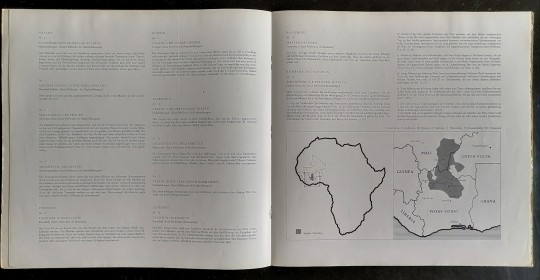

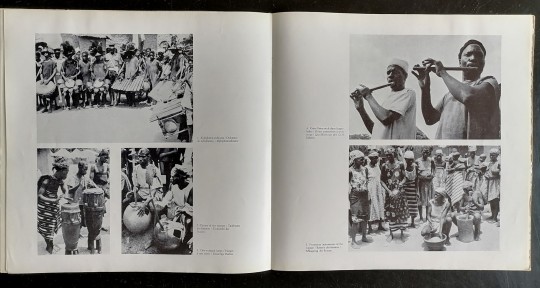


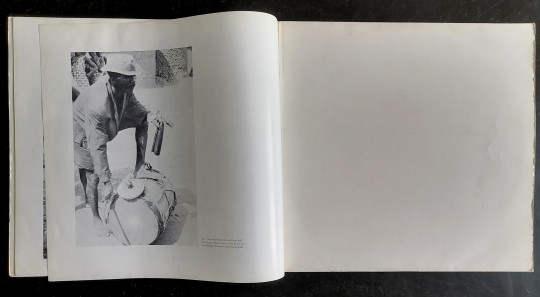


[rec. Hugo ZEMP]
"An Anthology of African Music, vol.8 : The Music of the Senufo"
(LP. Bärenreiter-Musicaphon. ? / rec. 1962/65) [ML/CI/BF]
youtube
#hugo zemp#1965#africa#mali#ivory coast#burkina faso#traditional#folk#musicology#ethnomusicology#senufo#records#Youtube
13 notes
·
View notes
Text
updates !! finally !!
got the last of my grades back for the fall semester :)) very happy w them and my gpa (3.425)

enjoyed my classes a lot this term (with the exception of ethnomusicology due to the professor).
did better in dinosaurs than i expected tbh but it was a super fun class even if some of the work was hard.
overall a good first semester at my new school, made some friends, joined some clubs, and love my program so far :)
#studyblr#study blog#langblr#langblog#anthropology#anthro#cultural anthropology#archaeology#archaeoblr#dinosaurs#paleoblr#paleontology#biological anthropology#ethnomusicology#college#autistic student#student life#uniblr#university
24 notes
·
View notes
Text
Now seems like a fun time to bring up this folk song from around the time the Titanic sank. It's about this guy Shine, the only black man aboard the Titanic, who tries to warn the white people about the iceberg and then swims to land when they don't listen. They offer him money, pussy, whatever else if he'll save them and he's like "no, it's too late". The song ends with him on land, drinking and fucking so hard that he dies. Then he goes to hell and fucks all the women in hell. It fucking rules and it's the only good piece of art ever made about the Titanic.
I hope when people start writing about the Titan sub that it'll be more like this than like James Cameron.
youtube
63 notes
·
View notes
Text

Organic Pulse Ensemble - Ypocalypse (Ultraaani)
All music by Gustav Horneij, 2024.
Thanks to AK for hipping me to this record.
#Organic Pulse Ensemble#Ypocalypse#lloyd miller#zither suite#jazz#ethnomusicology#2024#ultraaani records#finnish label#spiritual jazz#gustav horneij#multiinstrumentalist
9 notes
·
View notes
Text
Archaeoacoustics and 'Songs of the Caves'

Archaeoacoustics is a sub-field of archaeology and acoustics which studies the relationship between people and sound throughout history. It is an interdisciplinary field with methodological contributions from acoustics, archaeology, and computer simulation, and is broadly related to topics within cultural anthropology such as experimental archaeology and ethnomusicology. Since many cultures have sonic components, applying acoustical methods to the study of archaeological sites and artifacts may reveal new information on the civilizations examined.
The importance of sound in ritual practice is well attested by historical and anthropological evidence. Voices and instruments (pipes, drums) will also have played a key role for prehistoric societies, and a number of studies have sought to demonstrate that by measuring the acoustical properties of archaeological spaces and open-air locations. One of the principal difficulties, however, is to establish a robust methodology. Every space or location will have an acoustic signature, but that does not imply that vocal or musical performance was an essential part of ritual practice; nor that those places were specially designed or selected for their acoustical properties.
Palaeolithic painted caves have occupied a special place in this debate since studies in the 1980s suggested that the placement of paintings and murals within the caves might have been guided by the acoustics; that they might be directly correlated with resonance. In 2013, Durham University (Durham, England) archaeologist Chris Scarre joined a team of acousticians, archaeologists and musicians led by Professor Rupert Till (Huddersfield University) in a systematic on-site analysis of acoustic properties and prehistoric motifs in five Upper Palaeolithic painted caves in northern Spain: La Garma, El Castillo, La Pasiega, Las Chimeneas and Tito Bustillo. The Arts and Humanities Research Council funded project was supported by Spanish colleagues Manuel Rojo-Guerra and Roberto Ontañon, with permission from the Gobierno de Cantabria and Gobierno Del Principado de Asturias.
Their methodology in recording the acoustics of these caves was to use a swept-sine (also called a chirp) source signal in conjunction with a set of microphones, adjusting the position of the set-up to provide an overview of the acoustics of specific sections of the caves. In each location that was measured, the position of imagery on the cave walls was also recorded. The fieldwork generated a large body of data that was used to generate acoustic maps of the five caves that could be compared with the distribution of the imagery (paintings or engravings, representational images of animals, or abstract symbols). A Principal Components Analysis (a mathematical method used to reduce a large data set into a smaller one while maintaining most of its variation information) provided an averaged set of acoustical characteristics. This showed that the variance of the acoustic data can be explained by two main components, associated with (a) temporal decay of energy (rate at which it fades to silence) in the cave space and (b) the existence or absence of resonance. Other factors, such as the distance of motifs from the original cave entrances (some of them now blocked) were also recorded.
Statistical analysis concluded that motifs in general, and lines and dots in particular, are statistically more likely to be found in places where reverberation is moderate and where the low frequency acoustic response has evidence of resonant behavior. The results suggest that the location of Palaeolithic motifs might indeed be associated with acoustic features, and that an appreciation of sound could have influenced behavior among Palaeolithic societies using these caves. The study also demonstrated the application of a systematic methodology of recording and analysis to the archaeoacoustics of prehistoric spaces.
9 notes
·
View notes
Text
Btw the main reason I love studying what I'm studying is that music is like one of the main things that can connect people universally. You can portray SO MUCH through music regardless of anything, and it's one of those things that's meant to be shared and appreciated and loved. It's just, man I love music and I love people and I love being able to share
#anyway i started crying during last nights concert because i saw people in the audience crying#like during our final song which is a setting of the irish blessing#'may the road rise up to meet you/may the wind be always at your back'#that one#and just#gahhhhh i love it#i love people so much#anthropology#ethnomusicology#<-thats my field btw#i just#i am so full of love#and i love being able to have this experience here#and i love making connections because irish trad. is how we got bluegrass and country and some of the like#essential american music#because it was irish immigrants like my papaw's dad who brought it over#and i just#im having a lot of feelings rn#music#!!!!
45 notes
·
View notes
Text
youtube

Bulhu-Ensemble (Berta Tribe) - Aferi
from:
VA - Sudan: Music of the Blue Nile Province Tribes, The Ingessana and Berta Tribes (UNESCO, 1996)
#1990s#Sudan#Berta Tribe#Bulhu-Ensemble#Northeastern African Music#repetitive#hypnotic#manic#rhythmic#Ethnomusicology#UNESCO#1996#week 47 2023#Youtube
7 notes
·
View notes
Note
do u have reading recs on the rituals of slaughter? i’m very interested
I actually don't think I do because I haven't read about this specifically I just keep noticing it as a thread in more general ethnographic readings over the years (and often like the author doesn't treat it as particularly consequential). I might have a dig and get back to you though because I would love to see what work has been done on it.
I have seen a lot of conversations on halal and especially kosher practises from an ecological perspective BUT I'm mostly interested in the like spiritual/social/psychological ramifications of actually killing an animal and how that is mitigated ritually, which i really haven't seen any work actually analyse that even if it relates examples of it happening. and relatedly the idea of hierarchy in relation to animals - which varies a lot, but the whole 'man is the master of the beasts who owes them nothing in return and should have no concern for their suffering' is a pretty western christian perspective.
i am really not a fan of comparative religion and other comparative study [too long to get into here but I think it's important to study cultures in their own right & recognise specifics & especially not try to rationally 'justify' cultural beliefs or force connections to some kind of 'universal human nature'] so i want to make the distinction here between that mode of study - I just think it's interesting that many individual cultures share some aspect of contrition for the killing of animals and various responses to that.
relatedly i have noticed a bunch of animist beliefs (especially in hunter-gatherer societies who don't/didn't traditionally raise animals) make some kind of distinction between the killing of an animal's physical body for sustenance and the sense of domination or triumph over the animal's being. there are a lot of various formulations of this, but i always loved this ainu chant in which a fox's upper and lower jawbones have to be buried under the men's and women's toilet to stop the spirit of the fox from basically regenerating after the body is killed. beliefs in which certain parts can't be eaten and/or slaughter must be performed in certain ways are common and mostly defy any kind of 'logical' rationalisation (e.g hygiene).
there's also an interesting resonance in the fact that kosher and halal dietary laws both specifically forbid the consumption of blood, because it's associated with some kind of 'life force'. i.e: you can consume this meat as is necessary for you to survive but you are not entitled to this creature's very existence. the torah as a whole is like extremely ambivalent towards animal slaughter; at once a sacred ritual and blessing, but also dangerously intoxicating and needs to be constrained. at points slaughter of animals is explicitly linked to slaughter of humans; the intitial permission to eat meat is sort of grudging (and a midrash suggests it's basically offered for noah and his family to take out their bloodlust rather than kill humans); the ideal state is still a world in which humans and animals don't prey on eachother. i think its all very buberian (you thought i wasnt going to bring martin buber into this) in that it's accepted as something which is not ideal but may be necessary for survival.
sorry that this is just anecdotes and not a reading list! i am going to scout the work looking at this in detail but i would have to read it first before i felt comfortable recommending it! when I finish work though I will reblog this post with all the readings i can remember where i encountered specific examples although none of them are specifically about animal slaughter, but some of them are more broadly about relationships with the natural world. im glad other people find it interesting anyway, i think it's a super rich topic!
#ask#traderjoeshater#girl i want to write an article about thsi so bad 😭😭 maybe ill just go rogue i have a background in ethnomusicology so its not like its#miles off
4 notes
·
View notes
Text

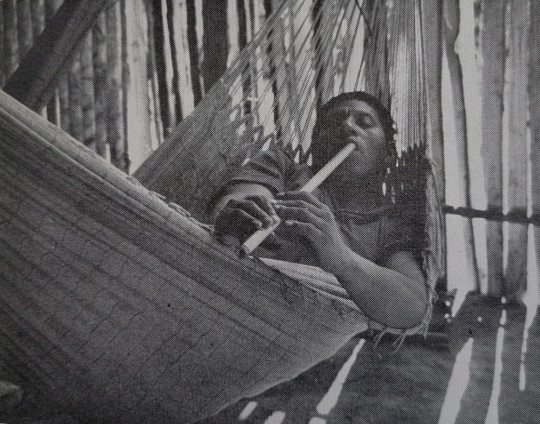


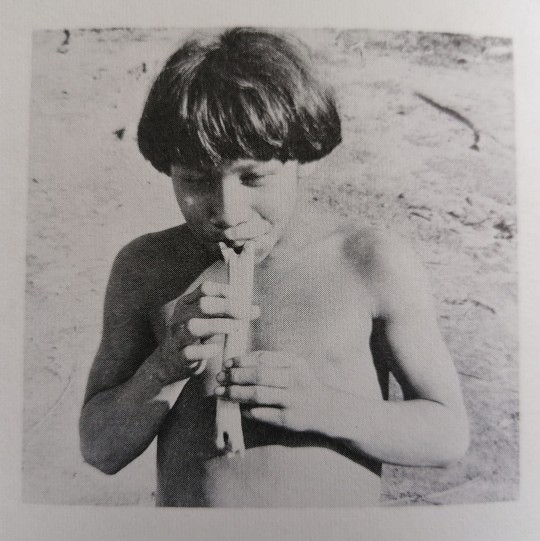
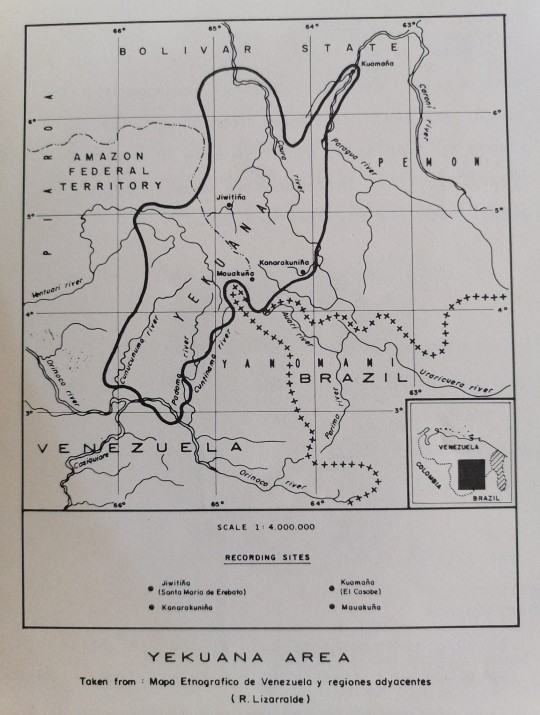


[rec. W. COPPENS, B. BRÄNDLI, J.-F. NOTHOMB]
"Music of the Venezuelan Yekuana Indians"
(LP. Folkways rcds. 1972 / rec. 1912/62-70) [VE]
youtube
#yekuana#1962#venezuela#amazonia#traditional#musicology#ethnomusicology#walter coppens#barbara brandli#jean francois nothomb#records#theodor koch grunberg#Youtube
57 notes
·
View notes
Text
first day back from break ready for the hell to come in the next two weeks left in the semester, heres some updates.
- i have two movies to watch today (3 hrs total) and assignments along w them
- all the projects i have due by the 13th:
• dinosaurs group project 6; extinction (2 page report)
• controversies in archaeology; still havent chosen if im writing about gender roles in Çatalhöyük or Paleolithic art (1500-2000 words)
• ethnomusicology fieldwork project about music & rituals, must observe/participate in a ritual involving music (3-5 pages)
• ethnomusicology oral report & literature comparison; choose 3 articles to compare in written discussion and use 1/3 to present an oral report to the class (i am actually very excited for this one)
^^^ im doing the oral report on the culture/history surrounding break dancing and the music used in battles, im attending the schools breaking club beginner class tomorrow to observe their discussion about the music & see what ill be learning when i join the class next semester
- preparing for the end of semester dance show case !!
#studyblr#study blog#langblr#langblog#anthropology#language learning#languageblr#anthro#dance#street dance#ethnomusicology#archaeology#dinosaurs#paleontology#cultural anthropology#biological anthropology
25 notes
·
View notes
Text
hello everyone
#i am white girl wasted#that's not actually true like neither word of that statement is fully true but i still think that's one of the funniest little sayings#the feminine urge to go to grad school for ethnomusicology#lol#vi is typing...
8 notes
·
View notes
Audio
youtube
Another traditional Catalan Christmas song, el petit vailet.
Like most of our traditional carols, this song is from the point of view of one of the shepherds who travels to go see baby Jesus when he’s born and bring him presents.
Here’s the lyrics in Catalan and the translation to English:
Jo soc el petit vailet,
cansadet de molt camí,
vinc amb el meu gaiatet
per veure Jesús diví.
I am the little boy,
tired from a long journey,
I come with my little shepherd’s crook
to see divine Jesus.
[Chorus:]
[Xerrampim, xerrampim,
xerrampia,
Xerrampim, xerrampim,
xerrampó,
xerrampim que Josep i Maria
tenen un petit minyó.]
[Lalalalala
Lalalalala Joseph and Mary
have a small child.]
He portat la carmanyola
tota plena de vi blanc,
ametlles, mel i formatge
per a Jesús, el bell infant.
I have brought my lunchbox
all full of white wine,
almonds, honey and cheese
for Jesus, the beautiful child.
[Repeat chorus]
Si tingués jo més recapte,
també seria per a Vós,
heus aquí el gaiat que porto,
que és de cirerer d'arboç.
If I had more supply,
it would also be for You.
Here, have the shepherd’s crook I wear,
it’s made of strawberry tree.
[Repeat chorus]
#nadales#música#arts#el petit vailet#marina rossell#nadal#christmas#christmas songs#traditional songs#traditional music#folk music#folk songs#ethnography#cultures#culture#ethnomusicology#xmas#holiday season
22 notes
·
View notes
Text

this is so random but like. this bitch never heard of ethnomusicology?
#country music IS anthropology brother!#i fuck with this guy tho he would be really good at ethnomusicology if apparently he knew what it was
2 notes
·
View notes
Note
Do you have established ideas ab Hebitian music? :>
A little!
Given the way Cardassian memory works I've seen it suggested that their music would be rather "undeveloped" and ancient world to our ears. They probably get ear worms frequently, and they have poor hearing. Now, Cardassian memory isn't inherently eidetic, but from my understanding I think not training Cardassian children from a young age in how to sort through their memories would cause a lot of problems with day to day functioning.
For Hebitians specifically, I think there's a kind of long necked lute that I think appears in art a lot. I haven't sketched it out but it looks something like these, but a bit more bulbous at the end


And it's got... a slight erotic connotation, because it if you're filthy it looks vaguely like a Cardassian penis with the irllun flared. Worse, it was common for it to habe three strings (the same number of lateral ridges on that part of the body).
I think it's also possible drums might be popular- the physicality might appeal because of the hearing problem, and there's a scene that... is interesting and reads to me like a religious experience where Garak hears a repetitive thumping sound. This could just be his own heartbeat, but that doesn't mean similar experiences wouldn't make them popular. We know they chant as part of their religious rites to invoke Oralius, and probably do so for other gods and spirits (if there are other gods). They also communally hum at these as a form of mediation.
#Hebitians#Hilariously despite me having taken music classes I'm terrible at creating music#And I dint have too many sophisticated thoughts on like. Speculative ethnomusicology#Cardassians#Ds9#Cipher talk
22 notes
·
View notes
Text
I gotta study like the Islamic Golden Age/Mali Empire/Timbuktu etc again one of these days
#like i did in middle/high school sure but even if i had been paying rigorous attention it's been awhile lol#anyway I've been anticipatorily hyped all semester bc ethnomusicology class has 2 subsaharan africa weeks and a specifically ghana lecture#but finally at it and she's just blowing through saying shit like 'our Western ears can't actually discern these polyrhytms but#trust me that they're there' like fuck oFF this mindset is not what i fucking took this class for#if you can't discern the rhythms that's not some immutable ethno-essentialist Characteristic™ it's a fucking skill issue#so maybe don't use 'we weren't raised in this culture' as an excuse to assume it's too unparsable to bother teaching actually please?#anyway. /rant#I'll probably rant more later though. lol
2 notes
·
View notes